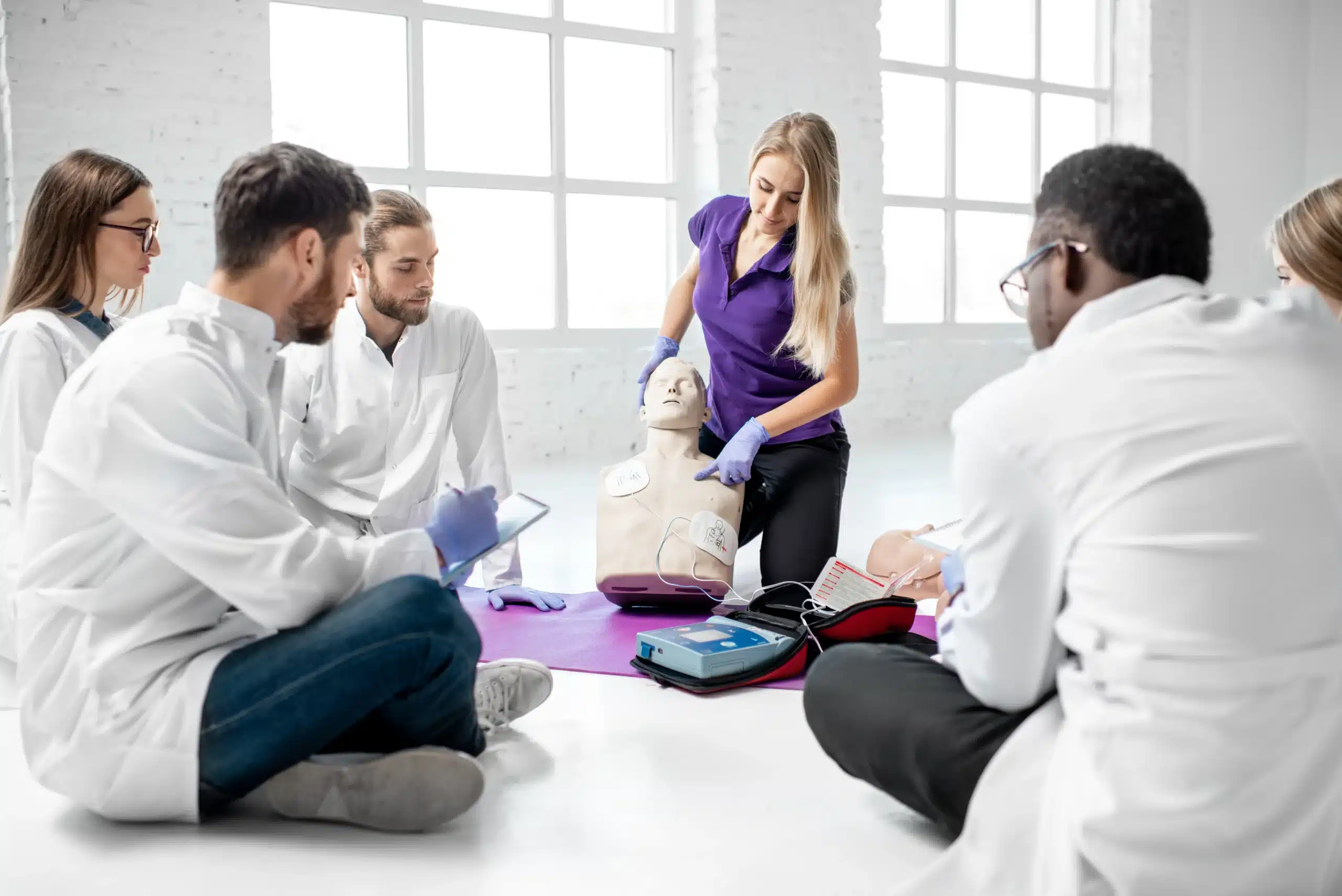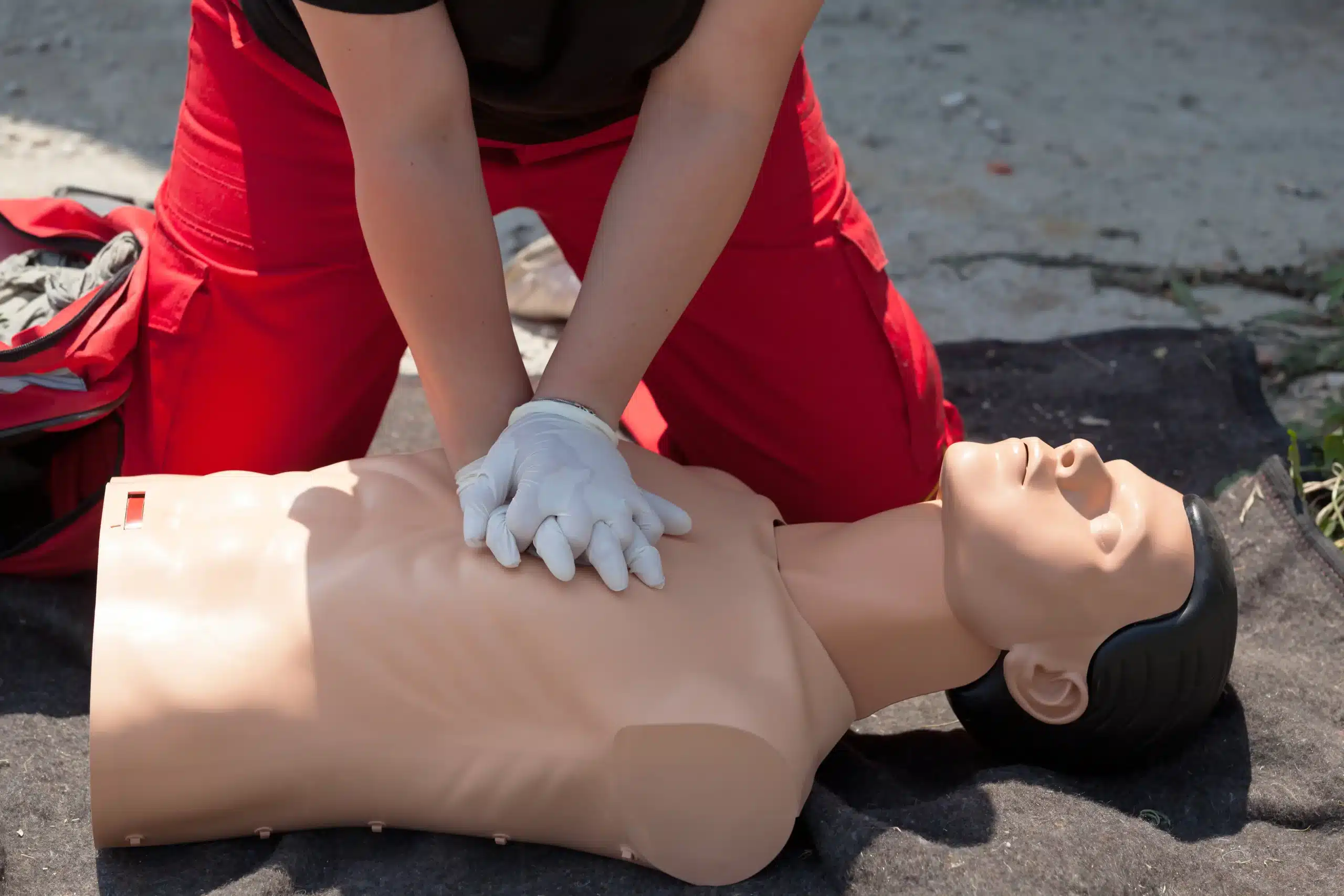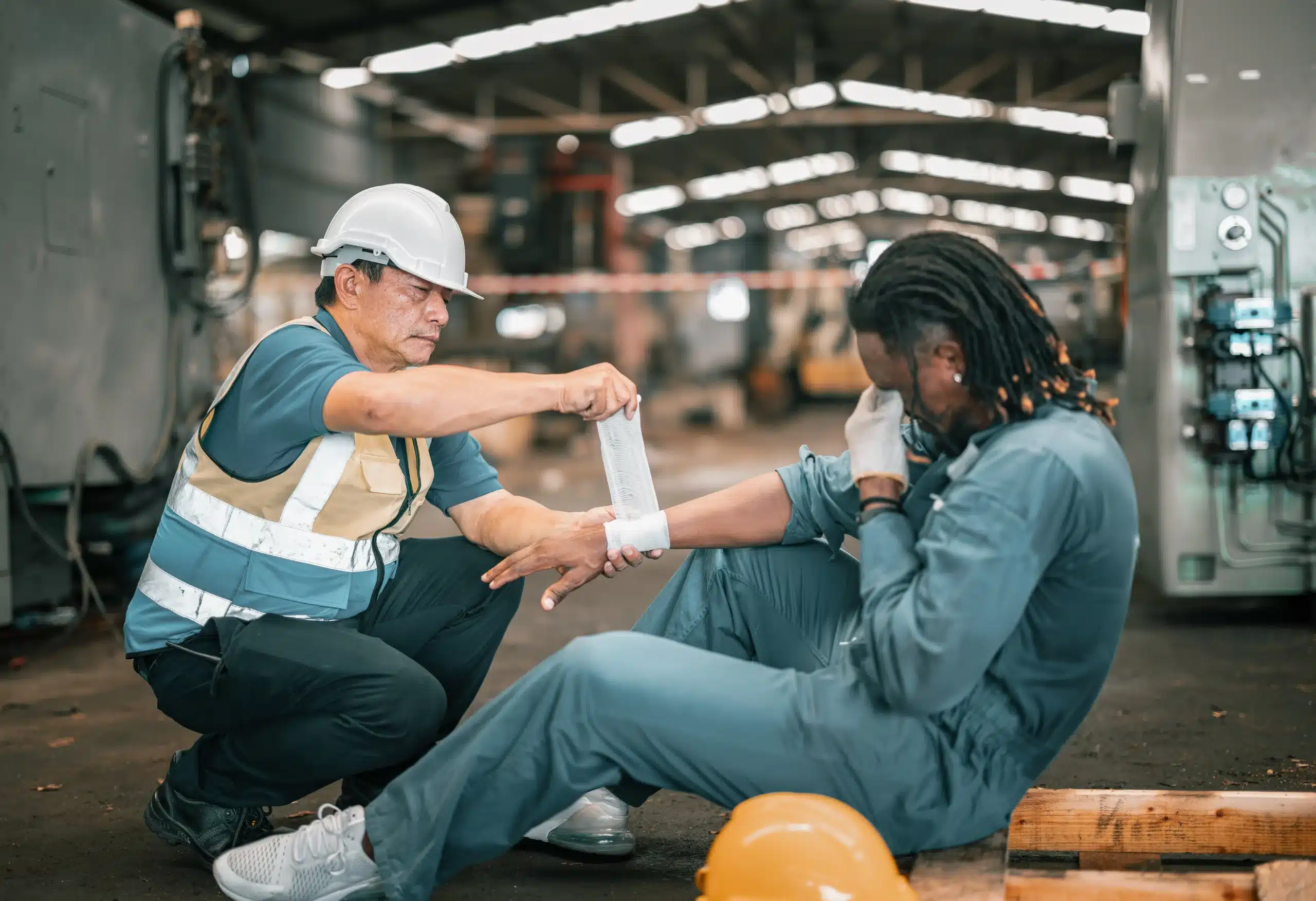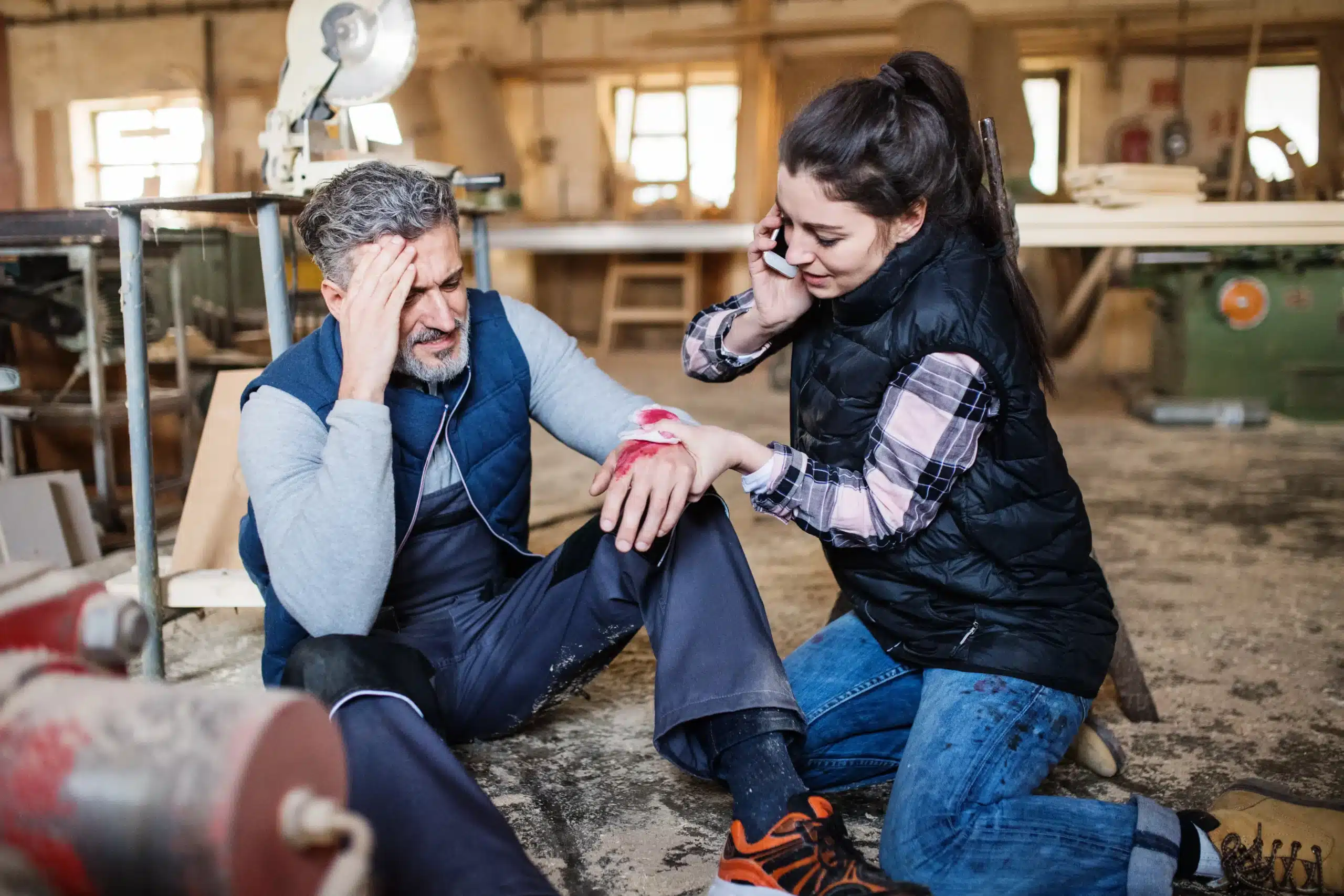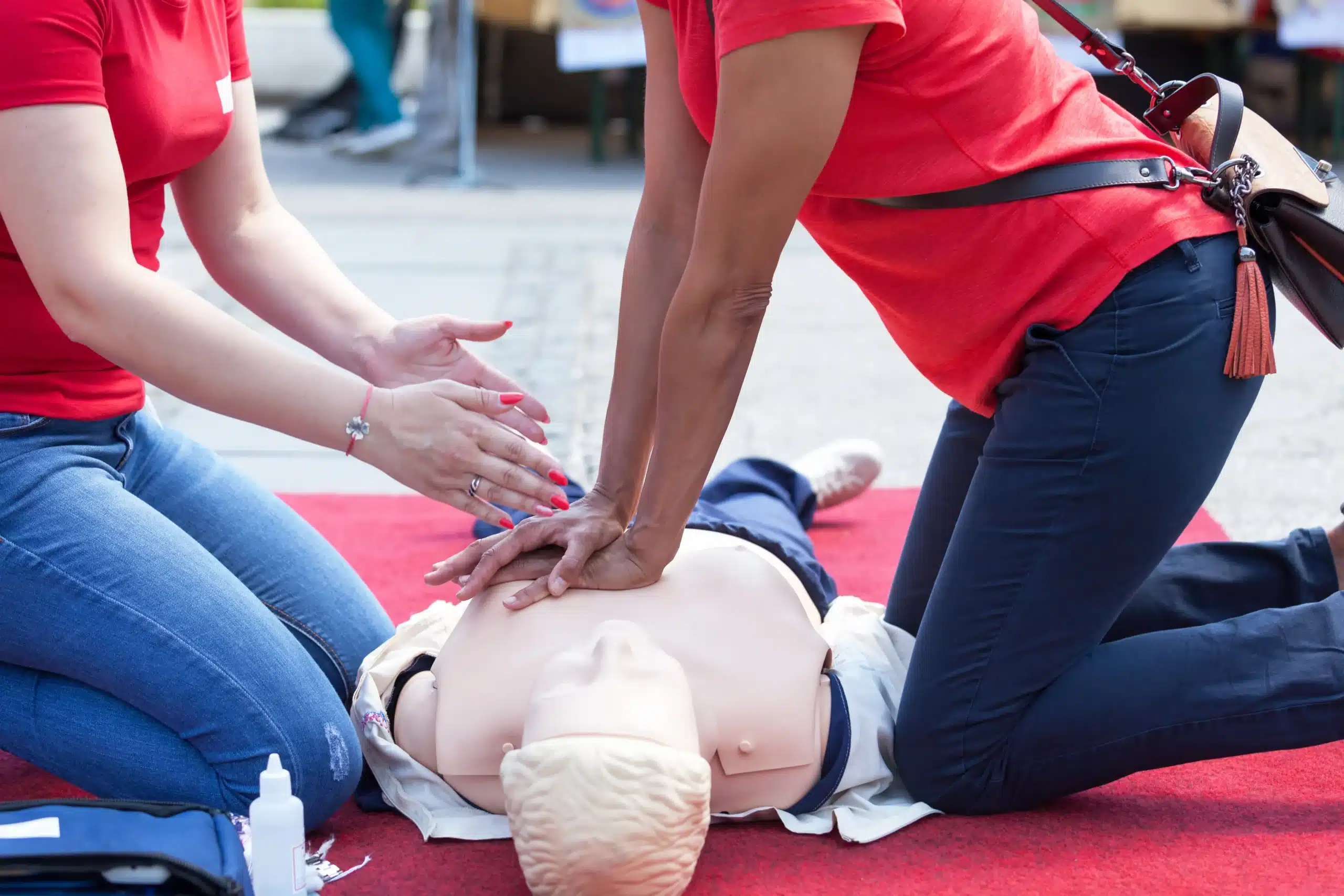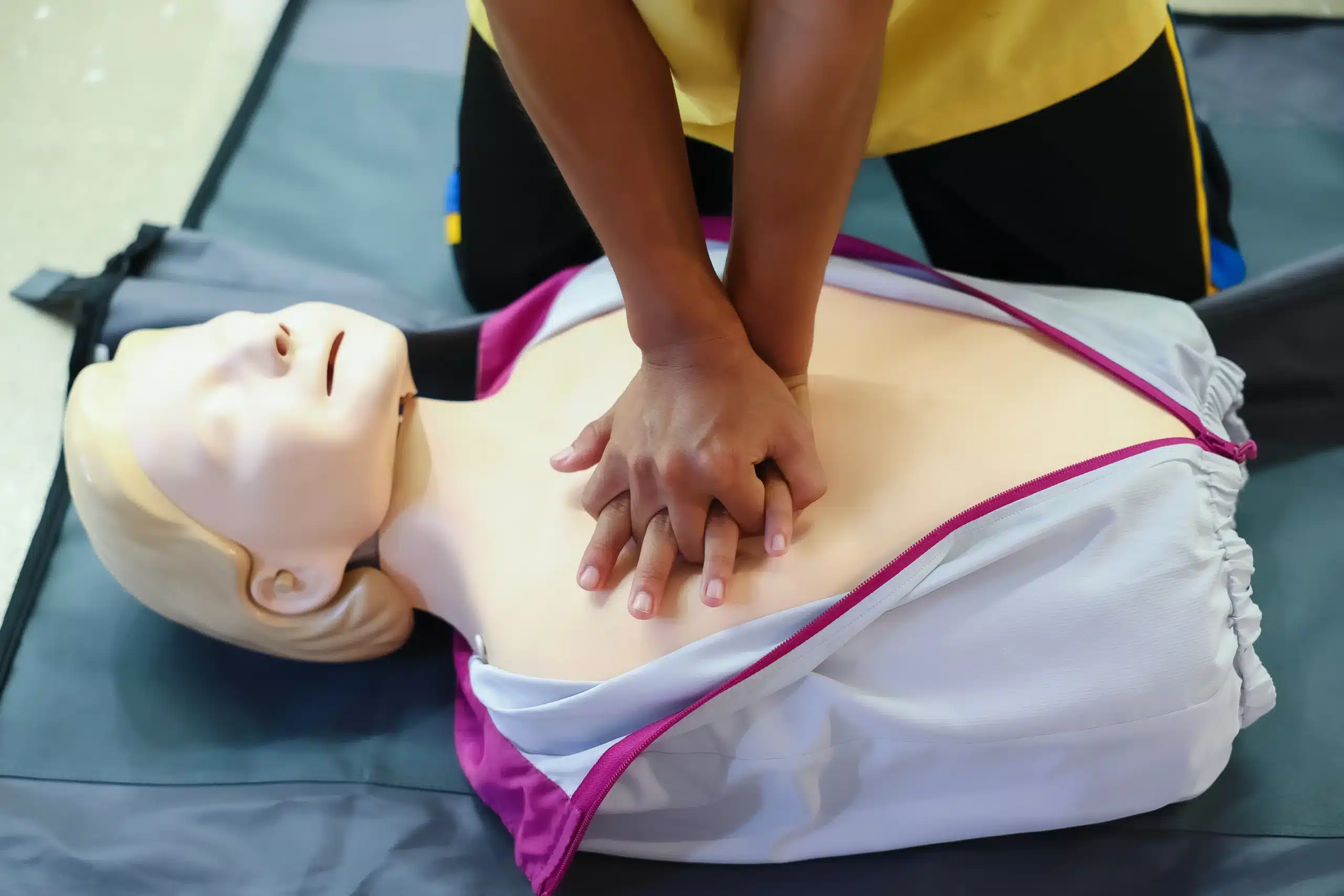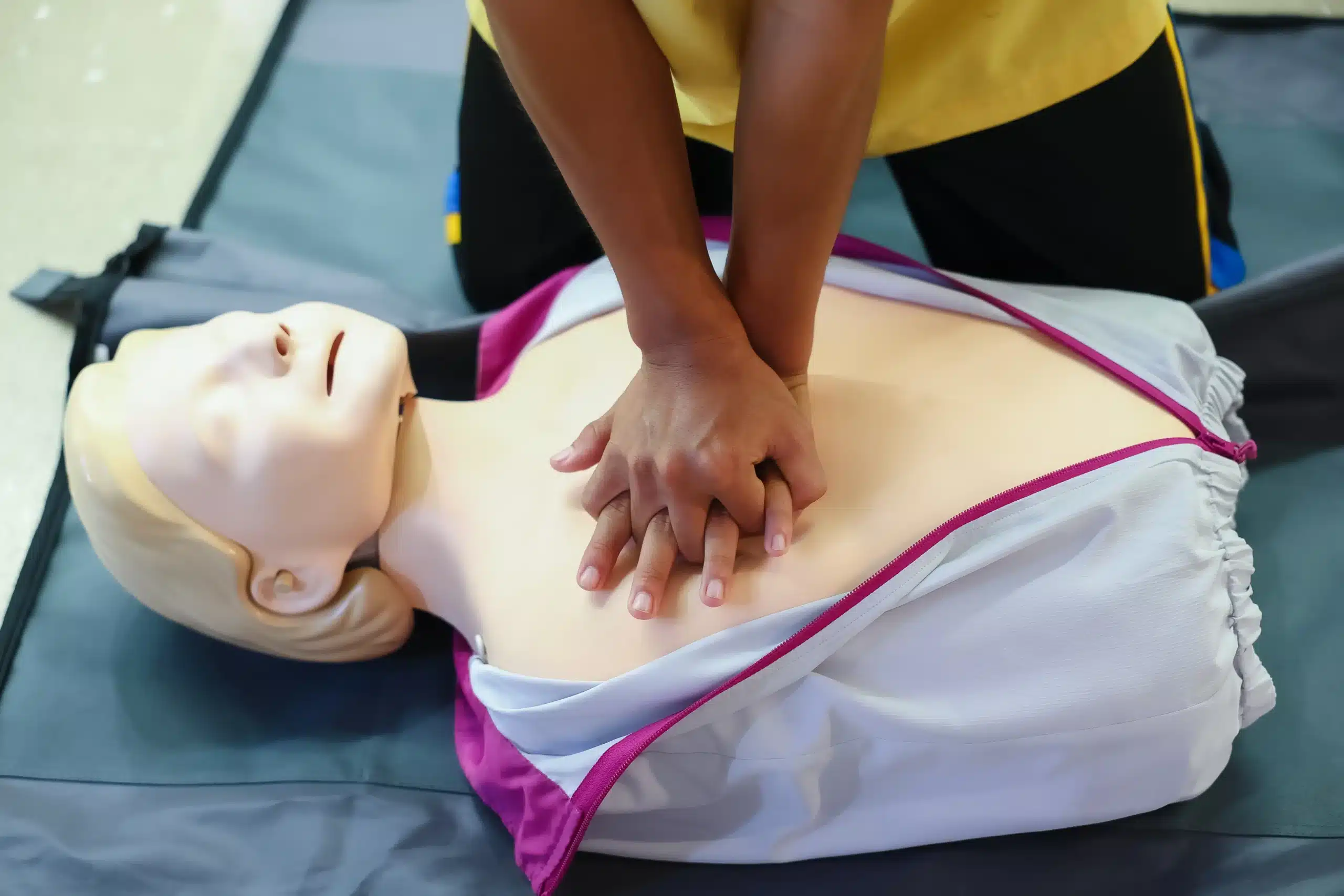In the face of a medical emergency, seconds can matter. BLS classes in San Jose equip you with the skills and confidence to act quickly and effectively, potentially saving a life. This guide explores the ins and outs of BLS certification, addressing common questions and concerns. We’ll cover the essential techniques taught in BLS classes, highlight top training providers in San Jose, and discuss the long-term value of this life-saving training. Let’s get started and empower you to become a vital first responder in your community.
Key Takeaways
- BLS certification empowers anyone to save a life: While essential for healthcare professionals, BLS training benefits everyone, equipping individuals to respond effectively in medical emergencies. Find a course and learn these vital skills.
- Select the right BLS course for your needs: Prioritize AHA-accredited providers with experienced instructors. Consider class size, format (in-person, blended, or online), and scheduling flexibility when choosing a course.
- Keep your BLS skills sharp: Regular practice and refresher courses are crucial for maintaining proficiency. This ongoing commitment ensures you can confidently and effectively use your BLS skills when they matter most.
What are BLS Classes & Why are They Important?
What is BLS?
Basic Life Support (BLS) classes teach you how to respond to life-threatening emergencies, focusing on providing immediate care until paramedics arrive. Think of it as the foundation of lifesaving techniques. While many people associate BLS with CPR, BLS actually covers a broader range of skills. You’ll learn CPR—including how to perform it on adults, children, and infants—as well as how to use an automated external defibrillator (AED). It’s more comprehensive than just CPR training. If you’re looking for BLS certification in San Jose, you can find BLS courses through the American Heart Association.
How BLS Benefits Healthcare Professionals & the Community
BLS certification is incredibly valuable, especially for healthcare professionals. It equips them with the skills to handle emergencies confidently, providing crucial care in those first few critical minutes. From administering CPR and using an AED to managing a patient’s airway, BLS training covers a variety of life-saving techniques. These skills also benefit the wider community. Anyone can take a BLS class and be prepared to respond to emergencies, potentially saving a life.
Common BLS Myths
There are a few misconceptions surrounding BLS certification. One is that it’s only for doctors and nurses. This isn’t true. While BLS is a requirement for many healthcare professionals, it’s also beneficial for anyone who wants to be prepared for an emergency. Teachers, coaches, parents, and even office workers can benefit from BLS training. Another myth is that BLS certification is expensive. While there is a cost associated with the training, it’s a worthwhile investment. Plus, some providers offer a low price guarantee, making it more accessible. Finally, some people believe BLS certification is difficult to obtain. BLS courses are designed to be straightforward and accessible, focusing on practical skills anyone can learn. For healthcare professionals looking to refresh their skills, RQI classes are also available.
Top BLS Certification Providers in San Jose
Finding the right BLS certification course can feel overwhelming with so many options. To simplify your search, I’ve compiled a list of reputable providers in San Jose offering high-quality training. Remember to check their websites for the most up-to-date schedules and pricing.
Safety Training Seminars
Safety Training Seminars offers a range of American Heart Association (AHA) courses, including BLS certification, in San Jose and surrounding areas. They prioritize convenient daily classes, making BLS renewal straightforward. Their focus on customer service and a low price guarantee make them a popular choice. Check out their course schedule to find a class that fits your availability.
American Red Cross
The American Red Cross in San Jose provides BLS certification and renewal training. They offer a few different learning formats, including standard in-person classes and a blended online/in-person “Simulation Learning” option for added flexibility. This blended format allows you to learn the material at your own pace and then practice your skills in person.
CPR Training Center
The CPR Training Center in San Jose offers AHA-certified BLS classes. These classes are approximately 3.5 hours long and include hands-on training covering CPR for adults, children, and infants, plus AED use and choking response. This makes it a good option for those looking for a comprehensive yet time-efficient course.
Stanford Health Care
Stanford Health Care offers a variety of American Heart Association courses, including BLS/CPR, ACLS, PALS, First Aid, and Pediatric First Aid. They’re known as a reliable option for comprehensive training in life-saving techniques. Visit their website to learn more about their course schedule and offerings.
BLS Class Costs & Value
Let’s talk about BLS class costs in San Jose—and why getting certified is a worthwhile investment.
Average San Jose Prices
BLS renewal courses in San Jose typically cost around $70 for a standard BLS CPR Provider class, according to Fremont CPR Classes. Prices can change, so check directly with your chosen provider for the most up-to-date information. Safety Training Seminars offers a low price guarantee, so you can feel confident you’re getting a competitive rate. Check our BLS course calendar for current prices and schedules in Willow Glen.
Factors Influencing Cost
Several factors can influence the final cost of your BLS class. The training provider, the class format (in-person vs. blended learning), and included materials all play a role, as explained in our guide to BLS courses in Santa Clara. Some providers may offer discounts for groups or returning students, so ask about available options. Also, consider whether the class includes any additional certifications or perks, like CPR masks or online resources.
Certification ROI
While cost is a natural consideration, think of BLS certification as an investment in your skills and community well-being. It’s easy to focus on the initial expense, but the long-term benefits and affordability of BLS training far outweigh the cost, as noted by American Health Training. Knowing you have the skills to potentially save a life is invaluable. For healthcare professionals, BLS certification is often a job requirement and can open doors to career advancement. So, while there’s a financial aspect, the real return on investment is the ability to confidently respond in a medical emergency.
BLS Training: Duration & Formats
Finding the right BLS training format is key to successfully learning the material and applying it in real-world situations. Luckily, San Jose offers a variety of options to fit your schedule and learning style. Let’s break down the most common formats:
In-Person Classes: Hands-on Learning
In-person BLS classes offer a truly immersive learning experience. These courses prioritize hands-on training, giving you the chance to practice essential skills like CPR, using an AED, and relieving airway obstructions in adults, children, and infants. This direct, practical approach builds confidence and ensures you’re prepared for actual emergencies. Standard in-person classes can be completed in as little as 4.5 hours, according to the Red Cross. This focused timeframe makes it possible to become certified efficiently. If you learn best by doing and value direct interaction with an instructor, in-person training might be your best bet. Check out our BLS courses in San Jose for upcoming in-person class schedules.
Online & Blended Learning
If your schedule demands more flexibility, online and blended learning BLS courses could be a great fit. Blended learning combines the convenience of online coursework with an essential in-person skills session. This allows you to learn the material at your own pace online, then demonstrate and refine your skills with a certified instructor. It’s a popular choice for those balancing work, family, or other commitments. The American Heart Association offers courses that use this blended approach, catering to diverse learning preferences. For a fully online option, some providers offer entirely online courses, which can be a good starting point. Remember that hands-on practice is crucial for mastering BLS skills.
Flexible Scheduling
One of the best aspects of BLS training in San Jose is the flexible scheduling. Many training centers offer classes daily and at various locations throughout the city, accommodating busy lifestyles. You can find courses on weekdays, weekends, and even evenings, making it easier to fit training into your routine. Whether you prefer a traditional classroom setting, a blended learning approach, or an online course, you’ll find options that work for you. This flexibility ensures that everyone has the opportunity to gain these life-saving skills.
What Will You Learn in a BLS Course?
BLS certification goes beyond the basics, equipping you to confidently respond to various medical emergencies. From CPR and AED use to airway management and choking relief, BLS training covers a range of life-saving techniques. Let’s break down the key components you’ll master:
Adult, Child, & Infant CPR
CPR is the cornerstone of BLS. You’ll learn how to perform CPR on adults, children, and infants, adapting your technique to each age group. This includes chest compressions, rescue breaths, and recognizing the signs of cardiac arrest. High-quality CPR can significantly improve survival rates, making it a crucial skill for anyone. Check out our BLS page for more information on CPR training. You can also find upcoming BLS courses in San Jose on our website.
AED Use
Automated External Defibrillators (AEDs) can restore a normal heart rhythm during sudden cardiac arrest. BLS training teaches you how to use an AED safely and effectively, including assessing the situation, applying the AED pads, and following the device’s prompts. This training empowers you to act quickly in critical situations.
Choking Relief
Choking can be life-threatening. BLS courses cover techniques for assisting both conscious and unconscious choking victims. You’ll learn how to perform abdominal thrusts (Heimlich maneuver) and back blows, and how to clear an obstructed airway. These skills can help prevent a choking incident from becoming a tragedy.
Emergency Team Dynamics
Effective teamwork is essential in medical emergencies. BLS training emphasizes clear communication, roles, and responsibilities within a team. You’ll learn how to coordinate with other responders, provide effective handoffs, and maintain a calm and organized approach during high-pressure situations. This aspect of BLS is particularly important for healthcare providers. For healthcare professionals looking to refresh their skills, our RQI program offers a flexible way to stay up-to-date. We also offer specialized training like the EMSA Health, Safety, and Lead Poisoning course for California childcare providers.
Choosing Your Ideal BLS Class
Picking the right BLS class can feel overwhelming with so many options available. But by focusing on a few key factors, you can find the perfect fit for your needs and learning style. Here’s what to consider:
AHA Accreditation & Approval
First things first, make sure any class you consider is accredited by the American Heart Association (AHA). This ensures the curriculum meets the latest evidence-based guidelines and your certification will be widely recognized. Reputable providers like Safety Training Seminars clearly state their AHA affiliation. This accreditation is a non-negotiable for high-quality BLS training. Look for providers who emphasize this accreditation—it’s a sign they’re committed to offering the best possible training.
Instructor Qualifications
Beyond accreditation, look into the instructors’ qualifications. Experienced, passionate instructors can make all the difference in your learning experience. Check if the training center highlights their instructors’ credentials and experience—this shows they prioritize quality instruction. A good instructor can provide personalized feedback and create a supportive learning environment.
Class Size & Attention
Consider class size, too. Smaller classes often allow for more personalized attention from the instructor, giving you ample opportunities to ask questions and practice your skills. While large lectures can be informative, hands-on practice is crucial for mastering BLS techniques. Look for BLS courses that emphasize interactive learning and provide sufficient time for practice.
Same-Day Certification
Finally, confirm whether the class offers same-day certification. Receiving your AHA BLS Provider card immediately after completing the course simplifies the process and ensures you’re ready to use your skills. Many providers offer this convenient option, so you can leave the class confident and certified. This also saves you the hassle of waiting for your certification to arrive in the mail.
Group Rates & Discounts
Getting your team BLS certified doesn’t have to break the bank. Many providers in San Jose offer discounts for groups, students, and healthcare professionals. Knowing where to find these deals can make a real difference in your training budget.
Corporate & Organizational Discounts
For businesses in San Jose looking to train multiple employees, group discounts on CPR and BLS training are a smart move. These discounts make it more affordable to equip your entire team with life-saving skills. Providers like Los Gatos CPR Classes often offer corporate and organizational discounts, so reach out to training centers directly to discuss options and tailor a program to your company’s specific needs. This proactive approach not only prepares your team for emergencies but also demonstrates a commitment to their safety and well-being.
Student & Healthcare Worker Rates
Students and healthcare professionals can often find special rates on BLS certification in San Jose. Given the importance of BLS in healthcare and the financial constraints many students face, these discounted rates make training more accessible. Check with your school or employer to see if they have partnerships with any training centers, or contact providers like Fremont CPR Classes directly to inquire about student and healthcare worker discounts. Every little bit helps, and these savings can make a difference.
Group Enrollment Benefits
Beyond the cost savings, enrolling as a group in BLS training offers additional advantages. Training alongside colleagues or classmates can foster teamwork and create a more comfortable learning environment. Safety Training Seminars highlights the benefits of group enrollment, emphasizing the convenience and financial incentives. Plus, coordinating schedules and training together simplifies logistics for everyone involved. If you’re part of a group interested in BLS certification, explore the possibility of a group enrollment to maximize both learning and value.
Preparing for Your BLS Class & Beyond
Getting ready for your BLS class involves more than just signing up. A little prep work goes a long way, and understanding how to maintain your skills afterward is key to confidently handling emergencies.
What to Expect During Training
BLS certification equips you with essential, life-saving skills. Your training will cover a range of techniques, from CPR and AED use to proper airway management. Expect a combination of instruction, demonstrations, and hands-on practice. You’ll learn how to respond to various medical emergencies, giving you the confidence to act quickly and effectively. This comprehensive training provides a solid foundation for anyone looking to make a difference in critical situations.
What to Bring
While your BLS provider will supply the necessary training equipment, a few personal items can enhance your learning experience. Bring a notebook and pen to jot down key points and any questions that may come up. Comfortable clothing is also recommended, as you’ll be actively participating in practice scenarios. Most importantly, arrive with a focused mindset. Avoid rushing through the practice sessions; take your time to fully understand each technique. Proper preparation ensures you absorb the material effectively and sets you up for success in the certification assessment. Check with your chosen provider; some, like our San Jose location, may offer additional resources.
Maintaining Your Skills
BLS skills are perishable. Even after completing your certification, regular practice is crucial. Studies show00716-7/fulltext) that retention of these critical skills can decline over time, impacting your effectiveness in real-life emergencies. Consider refresher courses or find a practice partner to keep your skills sharp. This ongoing commitment ensures you’re always prepared to provide assistance when needed. For healthcare professionals looking to maintain proficiency, consider exploring programs like our RQI program.
Using BLS Skills in Real Life
BLS training isn’t just for healthcare professionals; these skills are valuable for anyone in the community. From parents and teachers to office workers and community volunteers, knowing BLS can empower you to respond effectively in a wide range of emergencies. Don’t underestimate the impact you can have. Learning BLS means you’re prepared to assist family, friends, coworkers, or even strangers in need. Consider adding training like our EMSA Health, Safety, and Lead Poisoning course to your skillset, especially relevant for childcare providers in California. We also offer a low price guarantee on our courses, making quality training accessible to everyone.
Related Articles
- BLS Classes in Santa Clara: The Complete Guide – San Jose CPR Classes
- BLS Training in San Jose: Your Ultimate Guide – San Jose CPR Classes
- BLS Certification in Santa Clara: A Guide for Healthcare Providers – San Jose CPR Classes
- 12 Common CPR Myths Debunked – San Jose CPR Classes
- BLS Certification in San Jose: Your 2023 Guide – San Jose CPR Classes
Frequently Asked Questions
Is BLS certification only for healthcare professionals? Not at all! While it’s definitely a requirement for many healthcare jobs, anyone can benefit from BLS training. It empowers you to respond to emergencies and potentially save a life, whether you work in healthcare or not. Think of parents, teachers, coaches, or even office workers—BLS skills are valuable for everyone.
What’s the difference between BLS and CPR? CPR is actually a part of BLS. BLS is more comprehensive, covering CPR for adults, children, and infants, along with AED use and how to help someone who is choking. It gives you a broader skillset for handling medical emergencies.
How long does BLS certification last, and how do I renew it? BLS certification is typically valid for two years. Renewing is straightforward—just take a BLS renewal course before your current certification expires. Many providers offer renewal courses that are shorter and focused on refreshing your existing skills.
How much do BLS classes cost in San Jose? The cost varies depending on the training provider and the type of course. Expect to pay around $70 for a standard BLS renewal course. Some providers offer discounts for groups, students, or healthcare workers, so it’s always a good idea to ask. Also, look for providers with a low-price guarantee for extra peace of mind.
What if I have a busy schedule? Are there flexible class options? Absolutely! Many BLS training centers in San Jose offer classes on weekdays, evenings, and weekends to accommodate busy schedules. You can also find blended learning options that combine online coursework with in-person skills sessions, giving you more flexibility.


